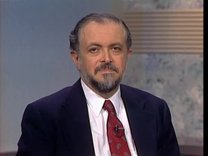Oral history interview with A. R. Ravishankara
- 2013-May-07
- 2013-May-09
A.R. Ravishankara was born in Shimoga, India, and grew up mostly in Mysore and Bangalore, India. His father was a farmer who died when A.R. was ten years old. Ravishankara attended a private school and graduated from high school when he was fourteen. He obtained a bachelor’s degree in physics and chemistry and a master’s degree in physical chemistry from the University of Mysore.
Ravishankara entered the PhD program at the University of Florida, working with Robert Hanrahan; his thesis dealt with hydrofluorocarbon (HFC). He and his wife then moved to the University of Maryland, where he worked on chlorine nitrate with Douglas Davis. From Maryland he accepted a position at Georgia Institute of Technology (Georgia Tech) and began research into ozone layer depletion.
From warm Georgia Ravishankara moved to Boulder, Colorado, recruited by Carleton Howard and Daniel Albritton, the head of the Aeronomy Lab at National Oceanic and Atmospheric Administration (NOAA). That same year Ravishankara’s son was born, and the ozone hole was discovered. He went to Antarctica to investigate the ozone hole. While on the field study, they could not talk about the discovery because the Montreal Protocol (MP) was being negotiated. Ravishankara and his wife also adopted a daughter during this period. He and Susan Solomon published twelve papers together. Hydrofluorocarbons (HFCs) seemed to be good substitutes for CFCs; bringing him back to his PhD thesis. Moving from kinetics to photochemistry and heterochemistry, Ravishankara became senior scientist. He then began working with cavity ring-down spectroscopy on nitrate (NO3) and dinitrogen pentoxide (N2O5) and nighttime chemistry. He also worked on aerosols.
When Albritton left to organize the Earth System Research Laboratory, Ravishankara became first the acting head, then the head, of the Chemical Sciences Division. Much of his work entails explaining his research to government policy makers and members of the Montreal Protocol. As members have differing problems and agendas; science is a small part of the meetings, so Ravishankara attends MP meetings only if asked to present. Nitrous oxide is difficult to work with, as it is produced by growing food, so the attempt now is to limit the increase of agricultural use of nitrous oxide.
Ravishankara explains how to discuss climate issues with people outside his field. He recognizes that individuals have a tiny, indirect, and often invisible effect on climate, making them resistant to changing their own behavior. He says that science is only one input for decision-making.
Access this interview
By request 1 PDF Transcript File and 5 Audio Recording Files
Fill out a brief form and a staff member will review your request for these files. You should receive an email within 3 business days.
Usage is subject to restrictions set by the interviewee.
If you have any questions about transcripts, recordings, or usage permissions, contact the Center for Oral History at oralhistory@sciencehistory.org.





